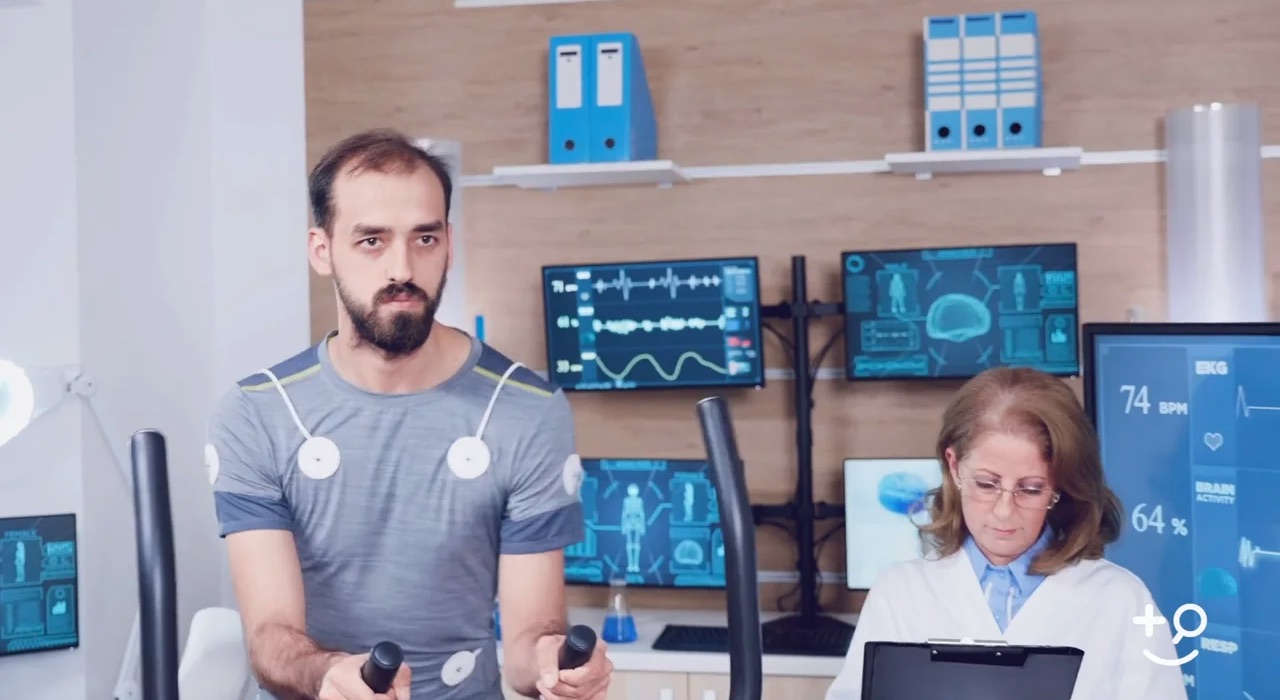This article originally ran in FloridaMD magazine in the March 2016 issue.
Pulmonary rehabilitation can benefit patients with a wide variety of lung diseases including COPD, pulmonary fibrosis, cystic fibrosis, and sarcoidosis (among other chronic respiratory illnesses). Pulmonary rehabilitation does not replace standard medical and/or surgical treatments for these lung diseases. Rather, it supplements and complements standard therapy.
Patients with COPD (and other chronic lung diseases) develop shortness of breath with activity. This leads to the tendency to avoid activity, which in turn leads to deconditioning. It is felt that one of the main benefits of pulmonary rehabilitation is to break the cycle of deconditioning. Pulmonary rehabilitation programs typically include two or three outpatient sessions per week for 10 to 12 weeks. Typically, a pulmonary rehab program will include aerobic exercise, strength training, patient education in management of lung disease – including nutrition, energy conservation, medication compliance, bronchial hygiene, and breathing strategies. The component of group support is also felt to be a significant contributor to the success of these programs. The group support motivates the patient to attend the pulmonary rehab sessions. It also allows the patient to realize that there are other people suffering from chronic respiratory illness and to see how they are able to overcome these obstacles. Pulmonary rehabilitation is considered to be critical both before and after lung transplantation. Occasionally, a patient will have such a significant functional and symptomatic improvement after pulmonary rehab that transplant can be delayed.
Pulmonary rehabilitation programs are typically multidisciplinary in nature and may include a respiratory therapist, registered nurse, exercise physiologist, nutritionist, physical and/or occupational therapists. The staff is trained to encourage the patient’s self management and coach them to adopt healthier habits through lifestyle modification. To enroll in a pulmonary rehabilitation program requires a medical referral. Pulmonary rehabilitation is covered by most third party payers. Pulmonary rehabilitation is appropriate for any stable patient with a chronic lung disease who is disabled by respiratory symptoms.

The pulmonary rehab program should involve assessment of the patient’s individual needs and creation of a treatment plan that incorporates realistic goals tailored to each patient. Evidence based analysis consistently reveals improvement in health related quality of life after pulmonary rehabilitation as well as improved exercise tolerance. Pulmonary rehabilitation has been shown to improve the symptom of dyspnea and increase the ability to perform activities of daily living. Pulmonary rehabilitation has also been shown to reduce health care utilization (including frequency of hospitalization) and decreases length of stay (when hospitalization is required). Pulmonary rehabilitation has not been demonstrated to improve survival.
The benefit from a pulmonary rehabilitation program may decline over time if the individual does not maintain their conditioning. Some pulmonary rehabilitation programs will therefore include a “graduate” or maintenance program after the patient finishes the initial program.
Patients who develop shortness of breath often become anxious which in turn exacerbates the sensation of dyspnea and this can become a vicious cycle. Pulmonary rehabilitation can be very helpful in addressing this problem. Sometimes pulmonary rehabilitation will require supplemental oxygen with exercise. Although the strongest evidence regarding pulmonary rehabilitation programs is in the setting of COPD, it has been shown to be beneficial in a variety of disease states. Pulmonary rehabilitation has been shown to be a cost effective tool in the fight against chronic lung disease. It is currently felt to be underutilized.

Daniel T. Layish, MD
Pulmonologist
Dr. Layish is a Board Certified Pulmonologist and serves as the Vice President, Medical Director of Clinical Research, and Co-Director of the Adult Cystic Fibrosis Program at Central Florida Pulmonary Group in Orlando, Florida. He is also the Past-President of the Southeastern Thoracic Association and a Doctorpedia Founding Medical Partner.
